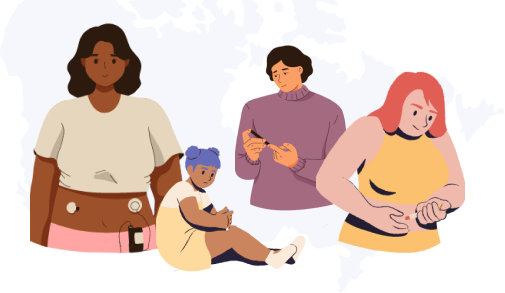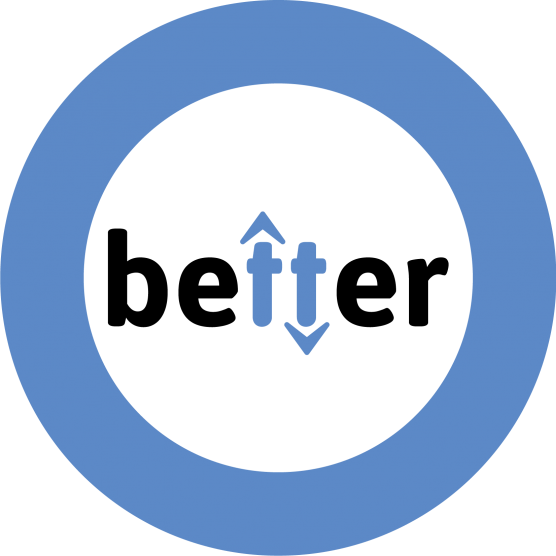Hypoglycemia (low blood sugar) is the main side effect associated with insulin injections in people with type 1 diabetes (T1D). The harder they work on maintaining or bringing their blood sugar levels close to the recommended range, the higher the risk of hypoglycemia.
With the busyness of everyday life and the many factors that can lower blood sugar, hypoglycemic episodes can easily happen unexpectedly—at work, in the car, during an outing, etc. —, requiring the person to leave everything aside and treat the hypoglycemia. Warning signs such as sweating, shaking, and nausea usually tell the person they have to raise their blood sugar before it gets too low. But if it falls too steeply, it can lead to seizures and loss of consciousness.
So, hypoglycemia can be quite scary both for the person experiencing it and their loved ones.
Concern vs real fear?
It’s completely normal to worry about hypoglycemia enough to stay alert. However, when the feeling becomes too intense, difficult to manage and anxiety inducing, it has turned into fear.
Fear of hypoglycemia can manifest before or during a hypoglycemic episode and is generally associated with:
- The fear of developing health complications (before or during the episode);
- The fear of losing control and behaving inappropriately or getting hurt;
- The fear of being judged by others due to a hypoglycemia-induced change in behaviour;
- The fear of having severe hypoglycemia and potential serious consequences.
A person with a fear of hypoglycemia might experience the following:
- Frustration, powerlessness and loss of control;
- Embarrassment and constant worry related to blood sugar levels;
- Symptoms of anxiety or state of panic during hypoglycemic episodes.
Why fear hypoglycemia?
Fear of hypoglycemia is rather common among people with T1D. It affects both men and women, and might be more prevalent when coupled with feelings of depression. Fear of hypoglycemia can even affect people who have never experienced hypoglycemic episodes or severe hypoglycemia, or who have had very few episodes.
There are many reasons why someone can develop a fear of hypoglycemia, including their own personality traits, and reasons such as:
- Having limited knowledge of hypoglycemia and how to prevent it, causing more frequent and increasingly severe hypoglycemic episodes;
- Feeling little or no warning signs of hypoglycemia;
- Having gone through a traumatic experience (e.g., loss of consciousness, hospitalization, nighttime episode).
Friends and family of people with T1D can also experience fear or worry about hypoglycemic episodes. For instance, they might be concerned about the potential adverse health effects or be worried they won’t know what to do if the person is unable to treat the hypoglycemia themselves.
Acknowledging the fear to better face it
Fear of hypoglycemia can have significant impacts on psychological well-being, quality of life and diabetes management.
Some people will develop unhealthy strategies in response to their fear of hypoglycemia, such as:
- Willingly maintaining their blood sugar levels above the target range to avoid hypoglycemia;
- Treating hypoglycemia when blood sugar is not low;
- Treating hypoglycemia with too much sugar to avoid another episode;
- Not taking the right amount of insulin (e.g., based on carbs consumed);
- Limiting sports activities and outings.
If you have a fear of hypoglycemia, there are a few strategies you can use to take control of it—and not let it control you!
- Ask for help. Being afraid is completely normal and quite common. However, if you feel like fear negatively affects your decision-making, your daily activities or your blood sugar targets, don’t hesitate to ask for help (e.g., healthcare team, psychotherapist, psychologist). There are strategies, treatments and psychotherapy that can help you reduce or even overcome your fear. There is nothing wrong with asking for and receiving help—in a perfect world, it would be offered to every person with T1D.
- Embrace technology. Studies show that using a continuous glucose monitoring (CGM) system (e.g., Dexcom, Freestyle Libre) can help significantly reduce the number of hypoglycemic episodes. CGMs provide information on blood sugar trends, and some models will sound an alarm when blood sugar gets too low or falls too quickly.
While this technology provides tangible benefits, it might not suit everybody. CGMs can actually amplify anxious feelings in some people (e.g., constantly watching blood sugar, panicking when trend arrows are pointing down even though they are still far from hypoglycemia).
- Stay up to date. It’s impossible to avoid all hypoglycemic episodes, but a lot of them can be avoided if you are well informed. For instance, it might be useful to regularly fine-tune your carb counting method and your insulin doses to help you improve your skills and prevent some hypoglycemic episodes.
The online Support training platform was designed specifically to help adults with T1D reduce hypoglycemia. The platform also includes documentation about fear of hypoglycemia. Find out more.
References:
- Cours «Tout sur la peur de l’hypoglycémie», plateforme Support, projet BETTER
- Wild, Diane et al. “A critical review of the literature on fear of hypoglycemia in diabetes: Implications for diabetes management and patient education.” Patient education and counseling vol. 68,1 (2007): 10-5. doi:10.1016/j.pec.2007.05.003
- Choudhary, Pratik et al. “Evidence-informed clinical practice recommendations for treatment of type 1 diabetes complicated by problematic hypoglycemia.” Diabetes care vol. 38,6 (2015): 1016-29. doi:10.2337/dc15-0090
- Chapter 4 – fear of hypoglycaemia (and other diabetes-specific fears), Diabetes UK, consulté le avril 2022, https://www.diabetes.org.uk/professionals/resources/shared-practice/psychological-care/emotional-health-professionals-guide/chapter-4-fear-hypos
Participate in the BETTER registry!

First registry of people living with T1D in Canada.
Learn More








